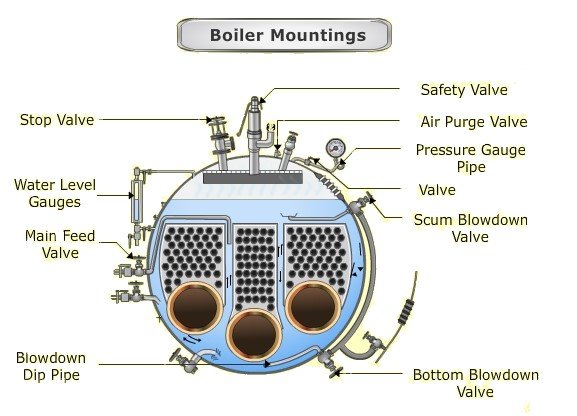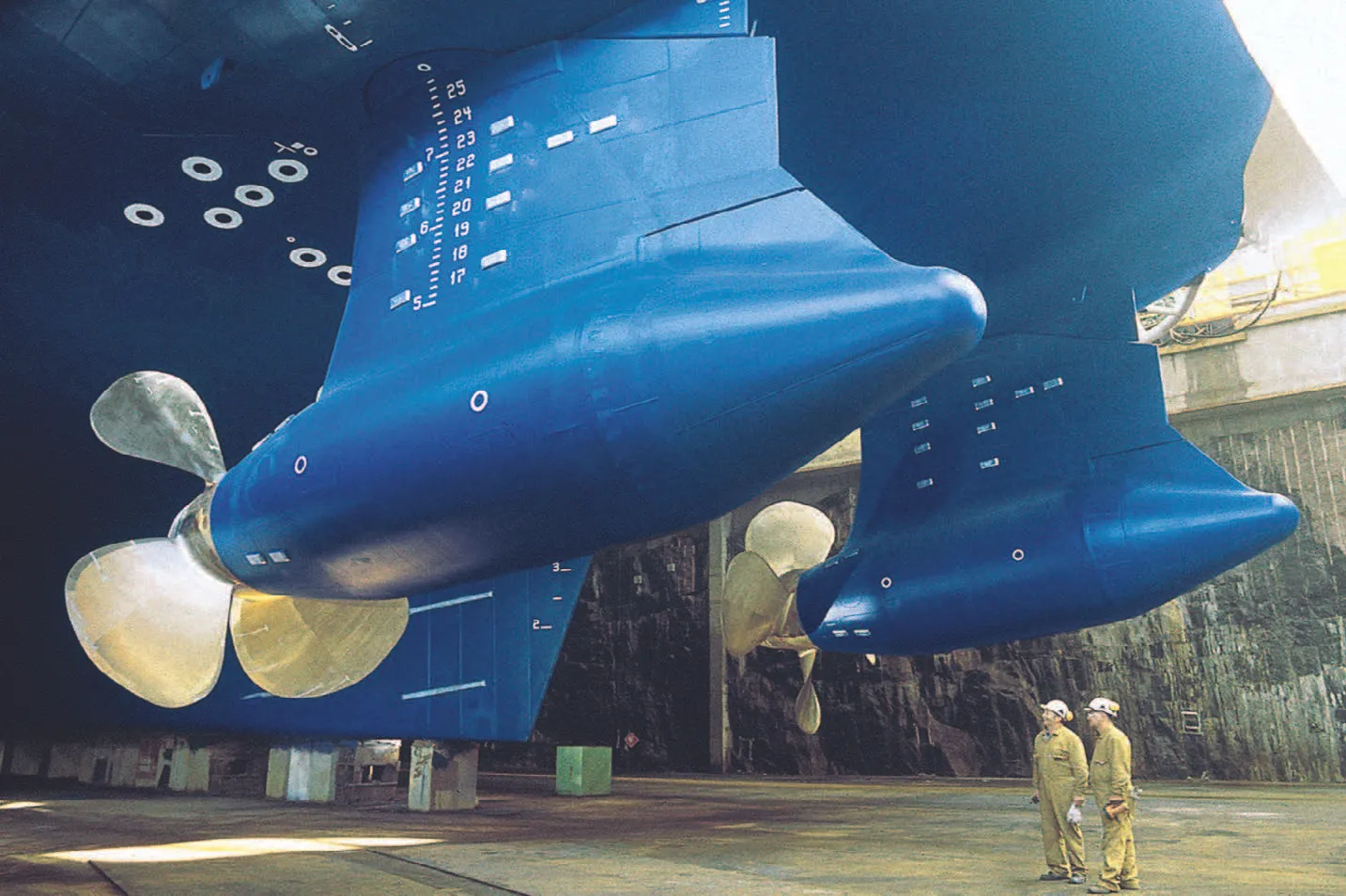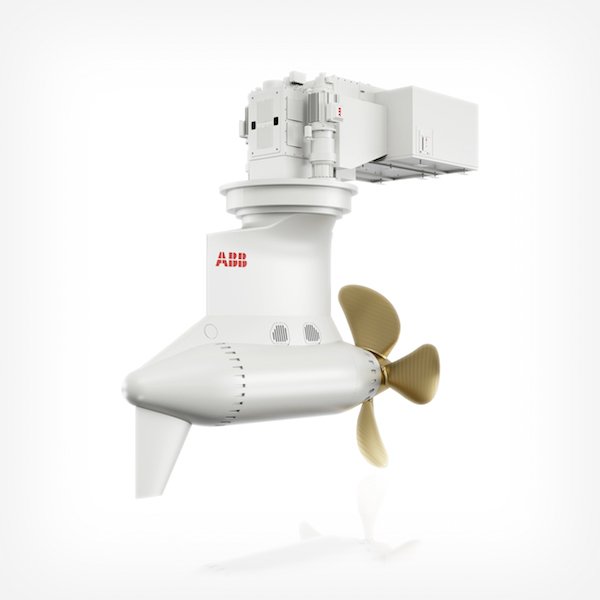
- Introduction
- Types of Boilers Used on Ships
- 2.1 Fire Tube Boilers
- 2.2 Water Tube Boilers
- Main Uses of Boilers on Maritime Ships
- 3.1 Propulsion
- 3.2 Auxiliary Functions
- Key Components of Maritime Boilers
- 4.1 Boiler Drum
- 4.2 Superheater
- 4.3 Economizer
- 4.4 Air Preheater
- Popular Manufacturers and Models of Maritime Boilers
- 5.1 Aalborg Industries
- 5.2 Mitsubishi Heavy Industries
- 5.3 Miura
- 5.4 Kangrim Heavy Industries
- Maintenance and Safety Considerations
- Conclusion
- Diagrams and Illustrations
1. Introduction
Boilers are an essential component of maritime vessels, providing the necessary steam for various shipboard operations. This article aims to equip aspiring and newly qualified engineers with comprehensive knowledge about boilers used on ships. We’ll explore the different types of boilers, their main uses, key components, popular manufacturers, and important maintenance and safety considerations.
2. Types of Boilers Used on Ships
2.1 Fire Tube Boilers
Fire tube boilers are one of the oldest types of boilers and are widely used on ships. In this design, hot gases pass through tubes that are surrounded by water. The heat from the gases transfers to the water, producing steam. These boilers are known for their simplicity and ease of operation.
Advantages:
- Simplicity in design
- Low initial cost
- Easy to maintain
Disadvantages:
- Limited steam production capacity
- Slow steam raising time
2.2 Water Tube Boilers
Water tube boilers are more modern and efficient compared to fire tube boilers. In this type, water circulates in tubes heated externally by the combustion gases. These boilers can produce high-pressure steam, making them suitable for large ships requiring substantial steam output.
Advantages:
- High steam production capacity
- Faster steam generation
- Can operate at higher pressures
Disadvantages:
- More complex design
- Higher initial cost
- Requires skilled maintenance
3. Main Uses of Boilers on Maritime Ships
3.1 Propulsion
Boilers are primarily used for propulsion in steam turbine ships. The steam produced drives the turbines, which in turn propel the ship. This method is highly efficient for large vessels such as tankers and container ships.
3.2 Auxiliary Functions
Boilers also serve various auxiliary functions, including:
- Heating fuel oil to ensure proper viscosity
- Supplying steam for heating and hot water in crew quarters
- Operating steam-powered pumps and other machinery
- Providing steam for cargo operations in tankers
4. Key Components of Maritime Boilers
4.1 Boiler Drum
The boiler drum is the central part of a boiler where water and steam are separated. It serves as a reservoir for the water-steam mixture and ensures the proper circulation of water within the boiler.
4.2 Superheater
The superheater is used to increase the temperature of the steam produced in the boiler. This high-temperature steam is essential for improving the efficiency of steam turbines.
4.3 Economizer
The economizer preheats the feed water before it enters the boiler. By utilizing waste heat from the exhaust gases, the economizer improves the overall efficiency of the boiler system.
4.4 Air Preheater
The air preheater heats the air before it enters the furnace, enhancing combustion efficiency. It recovers heat from the flue gases, thus contributing to fuel savings and increased efficiency.
5. Popular Manufacturers and Models of Maritime Boilers
5.1 Aalborg Industries
Aalborg Industries, now part of Alfa Laval, is a leading manufacturer of marine boilers. Their models, such as the Aalborg OL and Aalborg OS, are known for their reliability and efficiency.
5.2 Mitsubishi Heavy Industries
Mitsubishi Heavy Industries (MHI) produces a range of high-performance marine boilers. The MAC-B series is widely used for its compact design and high efficiency.
5.3 Miura
Miura is renowned for its innovative and energy-efficient boiler designs. The Miura EX Series is popular for its quick steam production and modular design, making it suitable for various maritime applications.
5.4 Kangrim Heavy Industries
Kangrim Heavy Industries manufactures a wide range of marine boilers, including composite and auxiliary boilers. Their models, such as the Kangrim KBEC and KBSC series, are favored for their robust construction and efficiency.
6. Maintenance and Safety Considerations
Proper maintenance and safety practices are crucial for the efficient and safe operation of maritime boilers. Regular inspections, timely repairs, and adherence to safety protocols help prevent accidents and ensure the longevity of the boiler. Key maintenance tasks include:
- Regular cleaning of boiler tubes to prevent scaling
- Inspection of safety valves and pressure gauges
- Checking and maintaining water levels
- Monitoring and controlling combustion efficiency
7. Conclusion
Understanding the technical details of boilers is essential for maritime engineers. This guide provides a comprehensive overview of the types of boilers used on ships, their main uses, key components, popular manufacturers, and important maintenance and safety considerations. Equipped with this knowledge, aspiring and newly qualified engineers can contribute effectively to the safe and efficient operation of maritime vessels.



